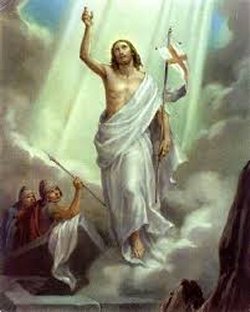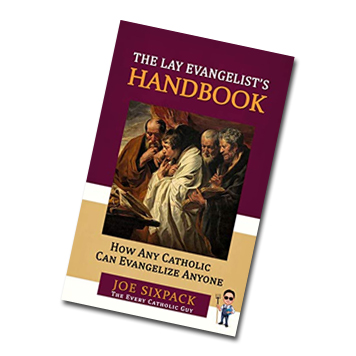Catholic Heroes… St. Edward The Confessor
By CAROLE BRESLIN
In the Middle Ages, England not only endured the raids of the Vikings, but also suffered from the raids initiated by Denmark and Normandy to control the small kingdom across the straights. Battles and intrigues were frequent, leaving little peace until the time of King Edward the Confessor. Even his reign experienced the plots and conspiracies so common when a kingdom is sought by more than one party.
Edward, the son of King Ethelred the Unready and his second wife, Emma of Normandy, was born in 1003. He was the seventh son of Ethelred, but the firstborn of his second wife who also gave birth to another son, Alfred, and daughter, Godgifu. The family lived in Islip, Oxfordshire, England at the time.
When Edward was still very young, a 1013 Viking raid led by Sweyn Forkbeard and his son, Cnut, seized the English throne from Ethelred. Emma fled to Normandy with Edward and Alfred. Shortly thereafter, Ethelred followed them. Historians concluded that it was during this time in Normandy that Edward developed his piety and love of the poor as he was mentored by Robert of Jumieges.
The following year, when Sweyn died, the people of England invited Ethelred to return and claim the throne if he would rule more justly than he had before. Ethelred agreed, but did not return immediately, sending Edward in his place, accompanied by his personal ambassadors.
Before he could return, Ethelred died in April 1016, leaving his eldest son, Edmund Ironside, to rule as his successor. However, Sweyn’s son, Cnut, had not left England when his father had died and continued to fight for his right to rule England.
The struggle for ascendancy continued until Edmund died in November 1016. Since Edward was the son of Ethelred and thus in line for the throne, he was a threat to Cnut. Even when his mother, Emma, married Cnut, the threat remained. Cnut even had Edward’s half-brother Eadwig executed.
Once again, Edward and his sister Godgifu fled into exile, beyond the reach of Cnut. Sadly, his own mother did nothing to protect the lives of her two children.
For 25 years, Edward lived in Normandy, most likely surviving on the benevolence of Godgifu who was married to Drogo of Mantes, count of Vexin. He also acted as king when he witnessed two of the four charters issued in the early 1030s in Normandy. In addition, he deepened his relationship with the Abbot Robert of the Norman abbey in Jumieges.
Meanwhile, Emma gave birth to Harthacnut, son of Cnut, and focused her attention on promoting his claim to the throne in England.
However, when Cnut died in 1035, Harthacnut preferred solidifying his position as King of Denmark. Then in 1036 Edward and Alfred, his younger brother, returned to England. Alfred was captured by Cnut’s relatives; he was tortured and died at their hands. Soon Edward returned to the safety of Normandy where he was regarded as a great soldier and statesman.
In 1037, Harold, the elder half-brother of Harthacnut, was accepted as king of England and soon banished Emma from England. His reign was short and he died in 1040, leaving the way open for Harthacnut to take the English throne.
In 1041, Harthacnut brought Edward back to England as heir and in 1042 with the support of Godwin — one of the most powerful men in England — Edward succeeded to the throne. Harthacnut had died and Edward, so very popular with the people, began his reign when he was crowned at Winchester Cathedral on April 3, 1043.
Emma, who had done so little to protect Edward, and even undermined his claim to the throne, was disciplined for unfaithfulness. Perhaps Edward was also motivated by the royal treasure she reputedly held. He and his three close associates rode back to Winchester in November 1043, and confiscated all of her property. Before her death in 1052, Edward restored Emma to her former position.
The intrigues among the various lines of rulers and powerful men such as Godwin continued to fester during the reign of Edward. After a series of abductions and bribes which went against him, he arranged marriages and granted lands that solidified his position as king. His love for the poor and his piety also endeared him to the people of England. Furthermore, with the tenacity, impetuousness, and formidable qualities he inherited from his parents, Ethelred and Emma, he maintained control of the kingdom.
In 1043, after Godwin’s eldest son, Sweyn, was appointed to an earldom, Edward married Edith, Godwin’s daughter. Since he had taken a vow of chastity when he was in Normandy, he and Edith agreed to remain chaste.
During this time King Magnus of Norway conspired to seize Edward’s throne, so Edward took control of the fleet in Sandwich. Sweyn II of Denmark submitted to Edward in order to prevent Magnus from taking over the throne of Denmark as well, but Edward refused to form an alliance with him. Only when Magnus died did the threats to the two thrones cease, with both rulers retaining their thrones.
Although Edward’s wealth was greater than any others, his lands were widely dispersed, leaving him with no secure base for his rule. He did not seek any more power and he even disbanded the navy he had obtained in Sandwich and for which he had levied a tax. The tax was cancelled in 1051.
Also in 1051 civil war almost broke out between Edward and Godwin over Church matters. Edward claimed authority over ecclesiastical appointments — not uncommon at that time. When the clergy and monks elected a relative of Godwin to be archbishop of Canterbury, Edward rejected the election and appointed his longtime friend from Normandy, Robert of Jumieges, an enemy of Godwin. Robert accused Godwin of trying to kill Edward just as he had killed his brother Alfred in 1036.
At this point, Edward sent his wife Edith to a nunnery, partly because she was Godwin’s daughter but mostly because they lived a celibate life, anyway.
Edward seemed to become disinterested in ruling and his wishes for a successor were never clearly determined. He died on January 5, 1066. Because of his sympathies for the Normans, some speculate that he wanted William of Normandy to succeed him, accounting for William’s invasion of England that same year.
The primary legacy of Edward is Westminster Abbey. The building was completed shortly after his death. Besides Edward the Confessor, many other members of royalty are buried there.
There seems to be little information on the holiness and sacrifices of Edward, but many miracles were attributed to his intercession as was the period of relative peace for the time he ruled from 1042 to 1066. He was called Edward the Confessor because he professed the Catholic faith. His feast is celebrated on October 13.
+ + +
(Carole Breslin home-schooled her four daughters and served as treasurer of the Michigan Catholic Home Educators for eight years. For over ten years, she was national coordinator for the Marian Catechists, founded by Fr. John A. Hardon, SJ.)











